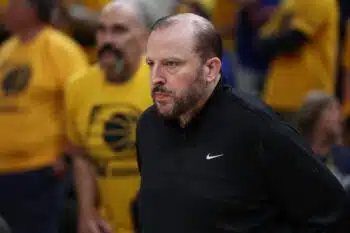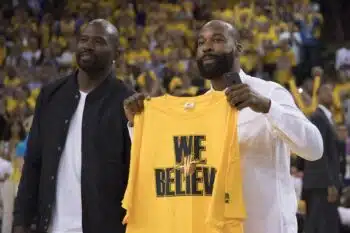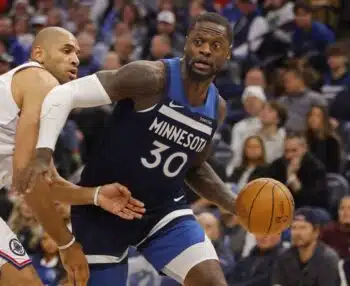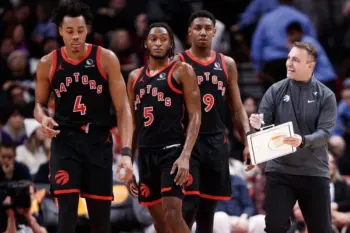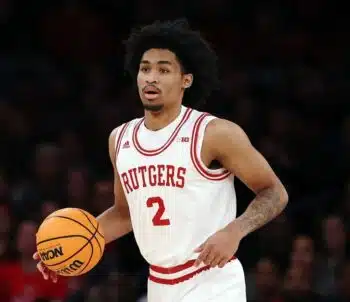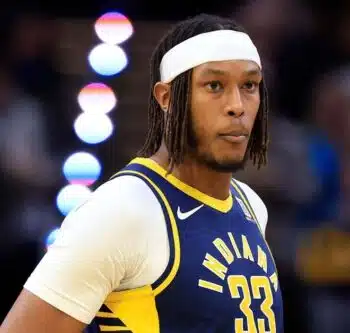NBA
What’s It Like to Return from a Major Injury?
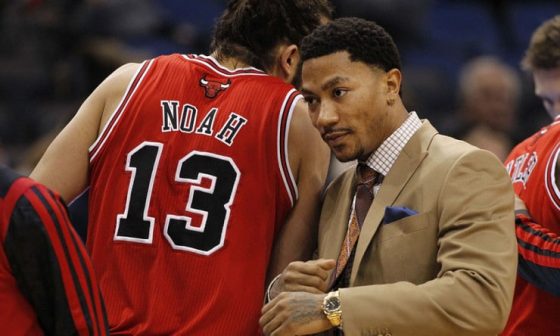
Entering the 2016-17 NBA campaign, a number of notable players are returning to the court after suffering a significant injury last season. This includes big-name stars such as Anthony Davis (left knee), Blake Griffin (left quad), Chris Paul (right hand), John Wall (both knees) and Marc Gasol (right foot).
Every step of an injury is difficult on a player, and their eventual return is no exception. While it’s the culmination of a ton of hard work and they’re thrilled to return to the game that they love, there’s always the possibility that the individual will be limited (physically and/or mentally) at least initially.
When a player goes through an intense rehab regimen, it can drastically change their body. This forces them to make adjustments once they’re healthy enough to play again. Dan Barto, who has trained over 100 NBA players as the Head Skills Trainer at the famed IMG Academy in Florida, has seen this happen many times as a player makes a comeback.
“Any time an athlete misses an extended period of time, they typically come back and work extremely hard, but they’re working with a new body and an old mind,” Barto explained to Basketball Insiders. “When they get back on the court, these ultra-athletic guys have a bunch of very strong muscles from the rehab they’ve done, so their old movement patterns and old reactionary on-court moves put pressure on different areas that their body isn’t used to. Sometimes they try to avoid the pain by moving too hard to one side. Sometimes their muscles are so strong, but their body and joints aren’t ready for the hard cutting and reactionary movements they’re doing. This can lead to an overuse injury or a tear because you’re basically putting a different engine into a car. In some cases, a player has to change the way that they play or work out after an injury to avoid wearing that area of their body out.”
Barto stressed that the key for a player to return to full strength is taking the rehab process slowly. Many NBA players are extremely hard workers who want to be in the gym as much as possible and push to return earlier than expected. While the player thinks they’re doing what’s best for themselves and their team, that kind of mentality can cause problems.
“I think sometimes a player will be cleared and then they think, ‘I’m ready to do everything again,’ but they need to ease back,” Barto said. “In baseball, you have minor league rehab assignments and simulated games for players to test themselves. But in basketball, you hardly see that method used. Rarely do teams send a guy to the D-League for a rehab assignment, but that could help ease them back.”
Jodie Meeks appeared in just three games for the Detroit Pistons last season due to a non-displaced fracture of the fifth metatarsal in his right foot. The veteran shooting guard was traded to the Orlando Magic this summer, but was recently ruled out indefinitely due to another surgery to stabilize the same metatarsal.
“You want to get back as soon as possible, while not rushing it,” Meeks told Basketball Insiders. “It’s real tough to balance those things.”
Barto has a strict order he follows as he eases a player back from an injury.
“What we do when a player is cleared – and I’ve even done this for players who are overweight and trying to get back into shape – is we do a lot of shooting first,” Barto said. “Then, we do jogging. Then, we add some ball-handling and moves. Then, we add jumping and, finally, some contact. If a doctor says you’re going to be out eight months due to an ACL injury, I’ve always said, ‘You need to take nine or 10 months before returning.’ You need time for athletic foundation build-up and then planned contact followed by actual reactive basketball simulation. The best order when a player is coming back is shooting and conditioning, then cutting and moving with the ball, then planned contact and basketball simulation.”
It’s also important to note that every injury is different, which is something Barto was quick to point out.
“Shoulder and ACL injuries are tough to rush back from,” Barto said. “And with ACL injuries, the player needs to slowly get back onto the court and build back up their athletic foundation or they’ll be more at risk for re-injury.”
Then, there’s the mental side of recovering from a serious injury. Not every player can be like Adrian Peterson or Paul George, putting their serious injury behind them and having an amazing bounce-back season right away. Some players struggle with the fear of re-injury. Others are hesitant to duplicate their pre-injury style of play (consciously or not). Mental hurdles are extremely common for a player who is trying to return to form.
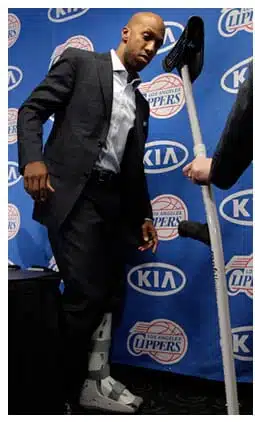
“Physically it’s hard, but through rehab you regain the strength and stability that was lost; however, the biggest obstacles are mental,” NBA champion Chauncey Billups told Basketball Insiders. “You have to rebuild your confidence. You not only have to prove to the team and the fans that you’re back but, more importantly, you have to prove it to yourself. Being injured has a way of chipping away at one’s confidence. When you cross that bridge [and regain your confidence], you’re back.”
“You have to get over the mental aspect, the thought of re-injuring yourself, and just trust your hard work and dedication to get back,” Meeks said. “You have to focus on what you can control – things like your effort and mental focus.”
“Coming back from my season-ending back surgery in 2014 was one of the toughest things I have dealt with in my life,” Phoenix Suns guard John Jenkins told Basketball Insiders. “Mentally and physically, I was drained for the first two-to-three months. You hate not playing the game you love for that long, but you learn to embrace the challenge and attack your rehab the same way you would attack a game or practice. Getting back on the court felt different and it takes a while to get back in playing shape. I would say that the hardest part for me was getting my conditioning where I wanted it and getting back into playing rhythm. I missed almost seven months. But after a good two to three weeks on the court, I started to see positives and regain confidence in my back and my game.”
“I was worried about whether I was going to be the same player after the injury,” said forward Adonis Thomas, who suffered a season-ending wrist injury in December. “After returning, I didn’t do anything to change my game though; I played with confidence immediately. But I was worried at first. [My goal became] to be better than I was before being injured. And I wanted to be in the best possible shape, that way I could prevent any other injuries in the future.”
When it comes to helping players with the mental aspects of their recovery, Barto has several methods that he uses.
“I think visualization is important,” Barto said. “You can’t go back and watch highlights of your old self. Using someone like Derrick Rose as an example, I wouldn’t advise him to watch his old film. I’d tell him to close his eyes and imagine himself playing in a Knicks uniform as opposed to dwelling on the past. And, ideally, you want everyone around the organization helping him with this and being on-board with this approach.”
The ease-back strategy also helps the player mentally, since it gradually increases their confidence and they start to feel like themselves again as they go through the progressions.
“In addition to visualization, a player should have a four-to-six week window once they’re cleared where they’re psychologically advancing,” Barto said. “They’re thinking, ‘Okay, I can make some shots now. Next, I can do sprints. Okay, my handle feels sharp and back up to speed. Okay, now they’re leaning on me, but I know they’re going to lean on me and play dummy defense.’ Then, with the simulated basketball, you’re being defended at 75 percent. It’s basically AAA level. By easing them back this way, they advancing physically and mentally.”
As the players quoted above pointed out, getting the body and mind right are equally important.
Returning from an injury is one of those things that players typically do behind the scenes. Outsiders rarely get to see the hard work that an individual is putting in or hear what issues they are dealing as they go through the process. Instead, very little information is disseminated between the point the injury occurs and the eventual comeback. Hopefully, pulling back the curtain on this process gives everyone a better idea of what a player may be feeling and thinking during that important recovery period.
